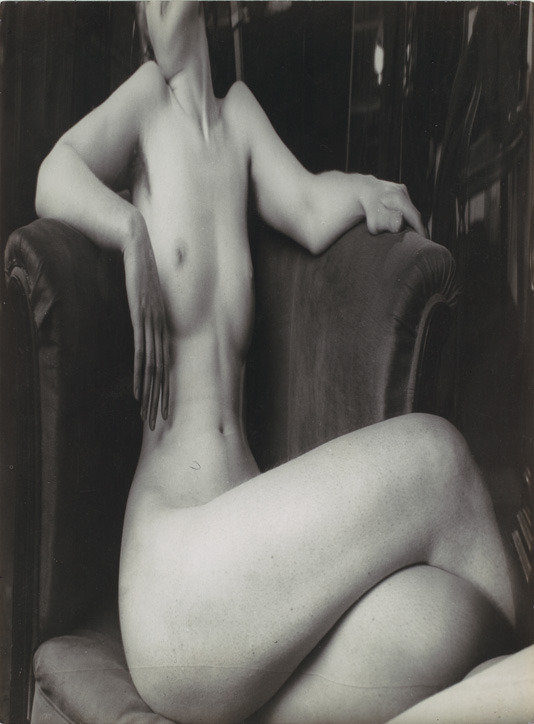Naked before the Camera
dal 25/3/2012 al 8/9/2012
Segnalato da
25/3/2012
Naked before the Camera
Metropolitan Museum of Art - MET, New York
In 20th-century art, the body became a vehicle for surreal and modernist manipulation and for intimate odes to beauty or poems to a muse. Beginning with the sexual revolution of the 1960s, nudity and its representation took on new meanings. The exhibition surveys the history of this subject and examines some of the motivations and meanings that underlie its expression. In the Gallery 304: The Rylands Haggadah - Medieval Jewish Art in Context.

Since the beginning of art and in every medium, depicting the human body has been among the artist's greatest challenges and supreme achievements, as can so easily be seen by Museum visitors walking through the galleries of Greek and Roman statuary, African and Oceanic art, Old Master paintings, or Indian sculpture. Tapping veins of mythology, carnal desire, hero worship, and aesthetic pleasure, depictions of the nude have also triggered impassioned discussions of sin and sexuality, cultural identity, and canons of beauty. Controversies are often aroused even more intensely when the artist's chosen medium is photography, with its accuracy and specificity —when a real person stood naked before the camera— rather than traditional media where more generalized and idealized forms prevail.
In the medium's early days—particularly in France, where Victorian notions of propriety held less sway than in England and America, and where life drawing was a central part of artistic training—photographs proved to be a cheap and easy substitute for the live model. While serving painters and sculptors, many nineteenth-century photographic nudes were also intended as works of art in their own right. Still others bore the title "artist's study" merely to evade government censors and legitimize images that were, in fact, more likely intended to stir a gentleman's loins than to enhance his aesthetic endeavors. Outside the realms of art and erotica, photographic nudes were made to aid the study of anatomy, movement, forensics, and ethnography.
In twentieth-century art, the body became a vehicle for surreal and modernist manipulation and for intimate odes to beauty or poems to a muse. Beginning with the sexual revolution of the 1960s, nudity and its representation took on new meanings—as declarations of freedom from societal strictures, as assertions of individual identity, as explorations of sexuality and gender roles, and as responses to AIDS.
Naked before the Camera surveys the history of this subject and examines some of the motivations and meanings that underlie its expression.
--------
March 27 - September 30, 2012
The Rylands Haggadah
Medieval Jewish Art in Context
From the calling of Moses to the crossing of the Red Sea, the drama of the ancient Israelites' exodus from Egypt is presented in The Rylands Haggadah.
This is the third in a series of installations focusing on one masterwork of Hebrew manuscript illumination from a national or international collection. This spring, the featured work comes from the John Rylands University Library in Manchester, England. Each month, the Haggadah will be open to a different page, affording visitors the exceptional opportunity to follow the artist's telling of the Exodus story. Works of art from the Museum's own collection, made for Christian use but depicting the saga of the Hebrew people, will suggest the larger, medieval context of biblical storytelling in which the Haggadah was created.
Image: André Kertész (American, born Hungary, 1894–1985). Distortion #6, 1932. Gelatin silver print. The Metropolitan Museum of Art, New York, Ford Motor Company Collection, Gift of Ford Motor Company and John C. Waddell, 1987 (1987.1100.321) © The Estate of André Kertész / Higher Pictures
Press requests for information, images, and interview opportunities can be directed to the Communications Department: Phone: (212) 570-3951 Fax: (212) 472-2764 Email: communications@metmuseum.org
Press preview: Monday, March 26, 10:00 a.m. - noon
Metropolitan Museum of Art MET
1000 Fifth Avenue at 82nd Street New York
Hours
Tuesday–Thursday: 9:30 a.m.–5:30 p.m.
Friday and Saturday: 9:30 a.m.–9:00 p.m.
Sunday: 9:30 a.m.–5:30 p.m.
Galleries are cleared fifteen minutes before closing.
Closed Monday (except Met Holiday Mondays)
Saturday Evenings are made possible by the William H. Kearns Foundation.
Admission
Adults $25
Seniors (65 and older) $17
Students $12*
Members (Join Now) Free
Children under 12 (accompanied by an adult)



